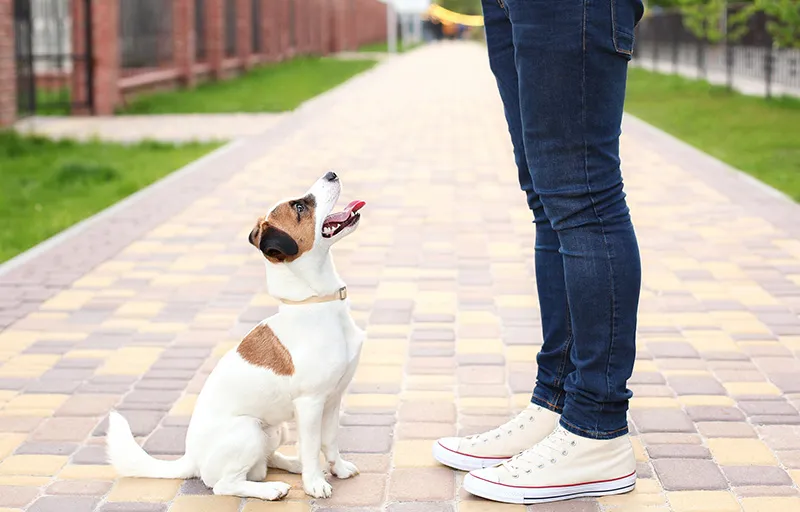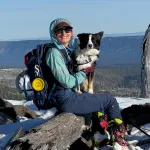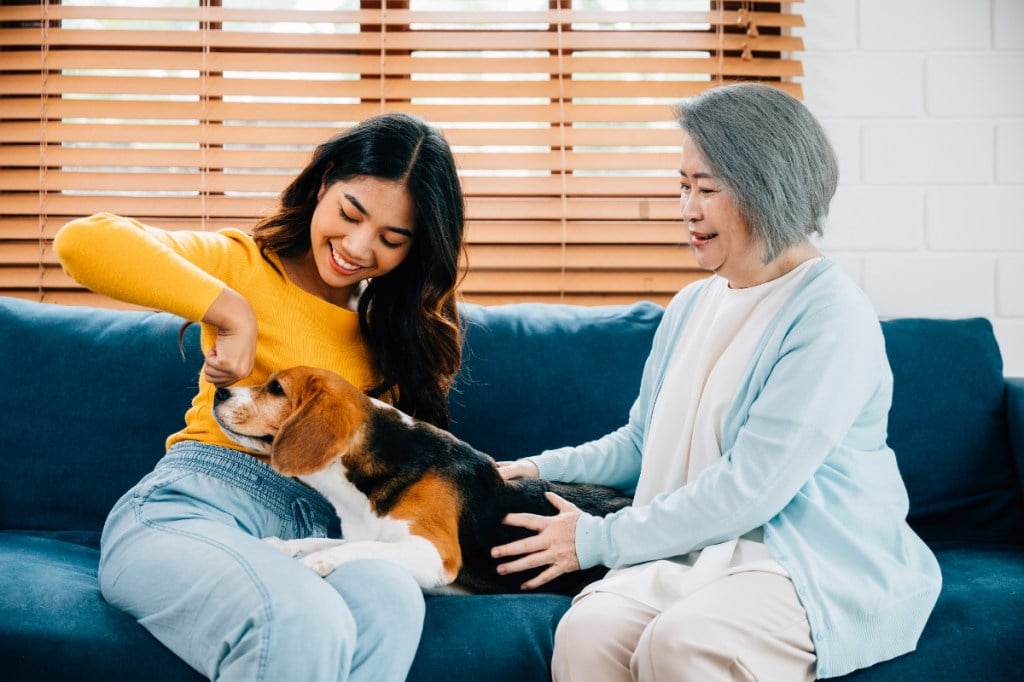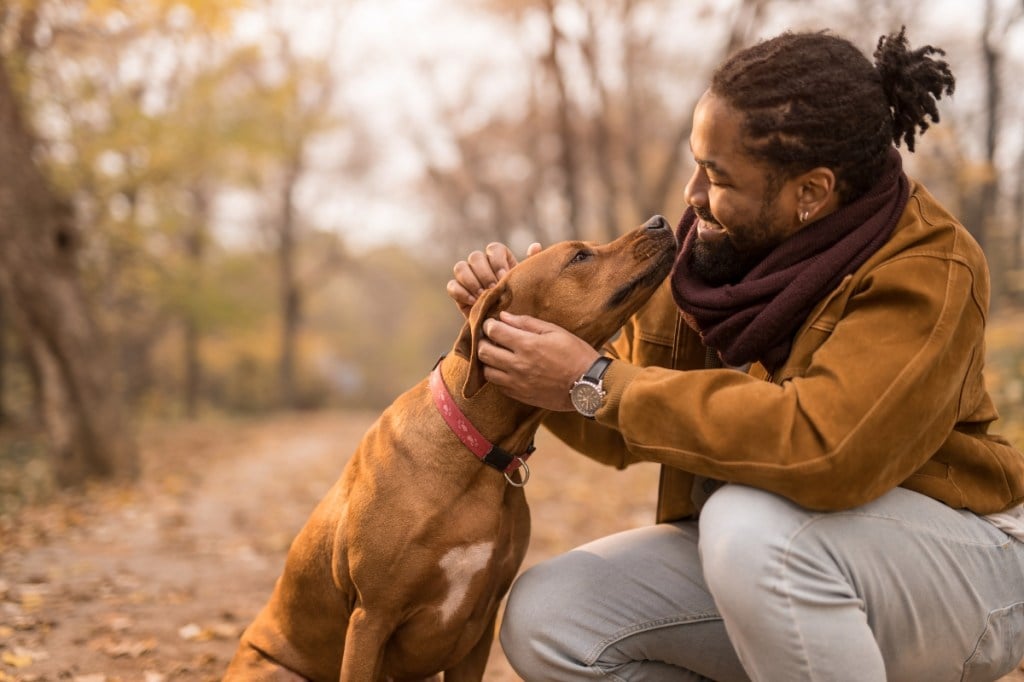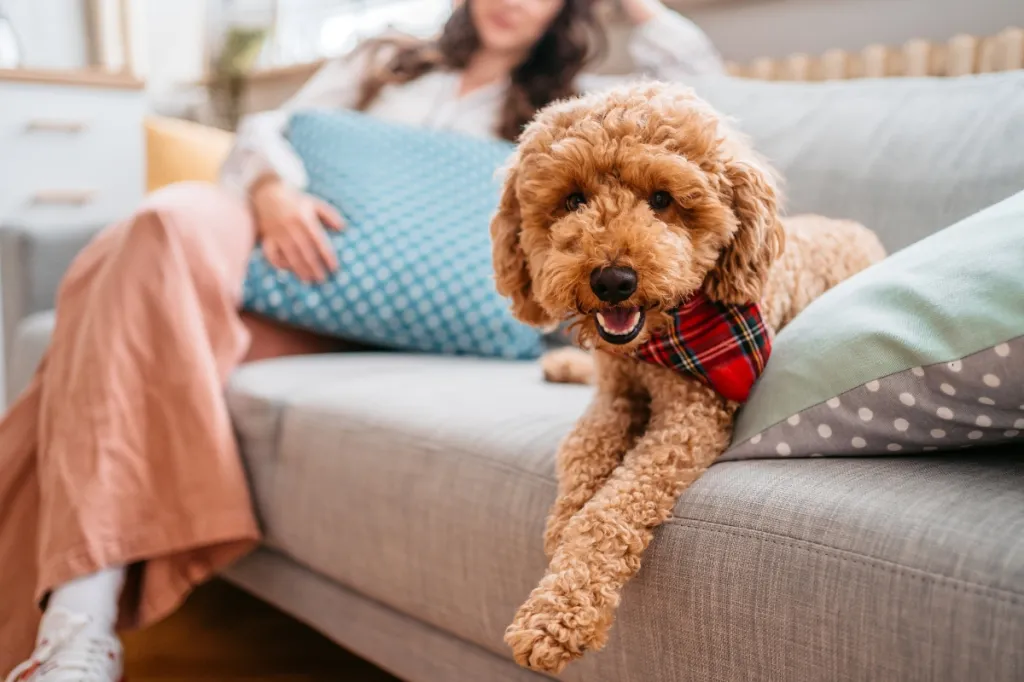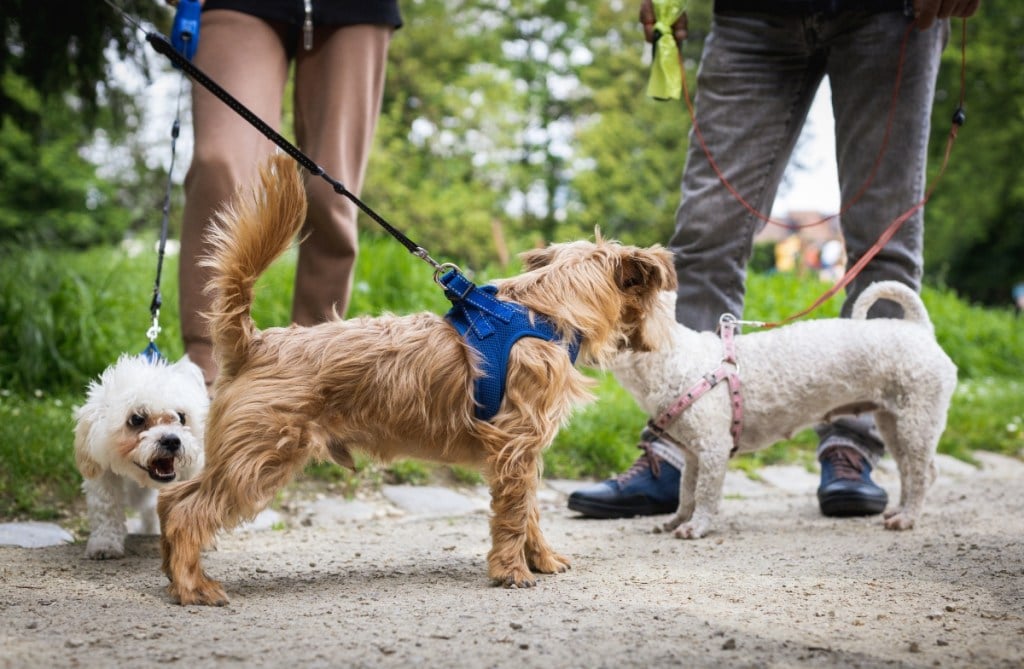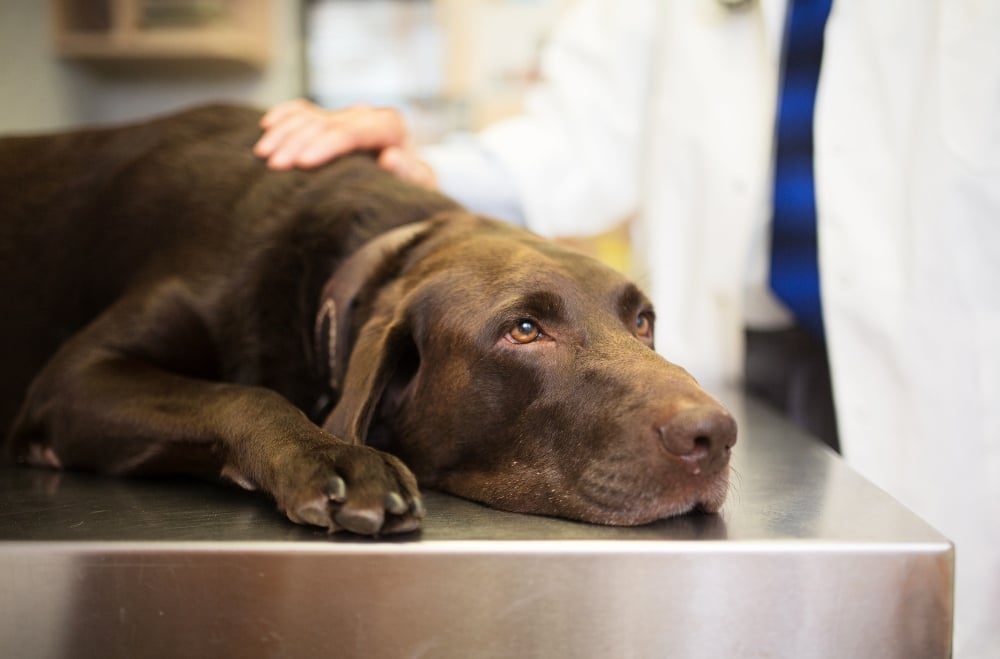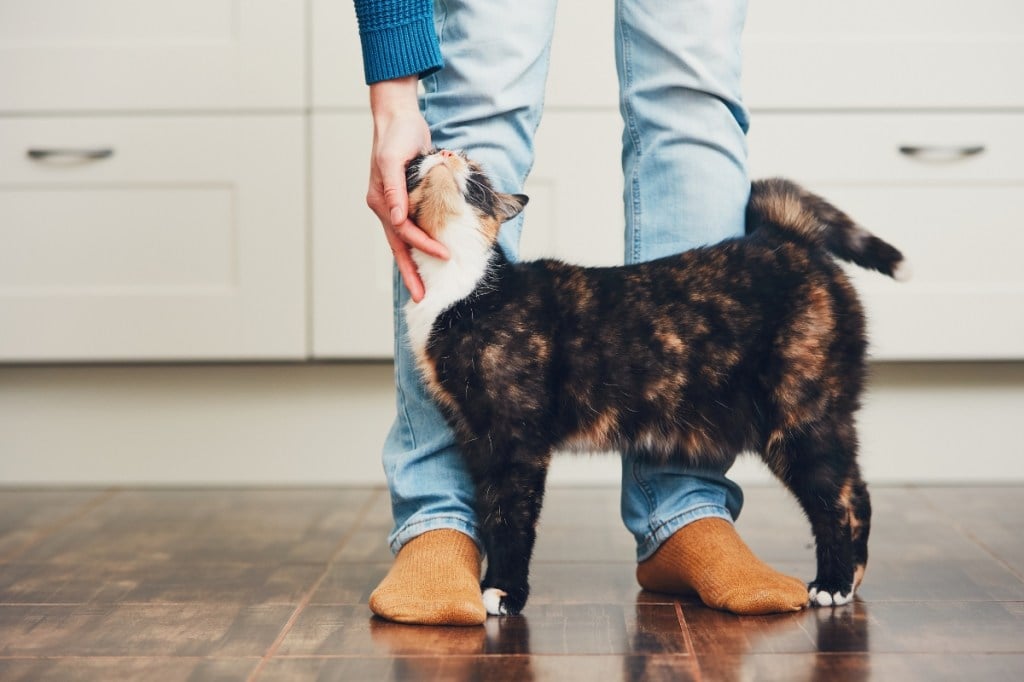Table of Contents
Key Takeaways
- Dogs adopted from shelters, rescues, or unscrupulous breeders may have emotional issues from abandonment or trauma.
- Dogs are not people, and by learning the basics of “pack dynamics” you can ease any anxiety and resolve most behavioral problems.
- Pet parents must show their dogs that they are the pack leader, so the dog feels protected and cared for.
With many people stepping up to foster and adopt dogs during the COVID-19 quarantine, many first-time pet parents may find themselves with a dog that has been previously abandoned or traumatized. Dogs show their stress in many different ways: barking excessively, growling, destroying things when you leave, and lunging on the leash, to name a few.
Sarah-Anne Reed, a dog trainer who specializes in helping dogs with behavioral issues, and owner of Pack Dynamics LLC, has some advice: Be patient and remember that they are a different species. It’s important to learn techniques to help your new family member feel safe, accepted, and comfortable in their new home, and with people and other pets.
“As humans, we think that if we love them enough, give them good quality food, plenty of exercise and affection, that any anxiety or fear will go away. This isn’t the case,” she said.
Sarah-Anne started helping dogs with behavioral issues over 12 years ago, after working as a therapist for people. She wanted to find an approach focused on helping dogs rather than control or dominate them. She offers online training classes and personal consultations.
Sarah-Anne advocates for changing a dog’s behavior by understanding and honoring them as an individual being, with a unique personality, rather than trying to force, punish, or control them with punitive tools such as choke chains and shock collars. Her training methods employ dog psychology and are based on the pack dynamics, a language she said all dogs understand, as even though we see them as a family member, they are still canine. Dogs have evolved and are now very tuned into their humans, but they always look to us as their pack/family members.
“I wanted to find a natural, kind approach that focused on understanding and respecting dogs as individual beings. The key to helping them is to learn their language and how to be their guardian and dog parent from their perspective. Once we learn how to effectively communicate with them and change their mind about who the canine leader/guardian is, the behavioral issues naturally resolve,” she said.
She is seeing an increasing demand for this approach. In particular, as millennials adopt dogs instead of having children — they see their dogs as their kids and want to understand them and give them the best life possible.
We asked what advice she has for pet parents who are new to caring for dogs who may have had a rough start in life.
What types of experiences might cause a dog to be troubled?
We need to remember that most rescue dogs have been abandoned by their previous family, spent time in a shelter, were transported to a foster home, and possibly spent time with several families before finding their forever home. And in more extreme cases, they might have lived on the street where they had to fend for themselves, lived in an abusive home, or been disciplined harshly. If they came from a puppy mill, they might have lived in unhealthy conditions, packed in with other dogs, fighting for food and space, and had minimal human contact. Even in the less severe cases, that is a LOT of trauma for a dog to go through, in a short amount of time, moving to new homes and environments and constantly transitioning into different family dynamics.
What are some signs that a dog is suffering from anxiety or fear due to trauma?
Dogs who have suffered abuse or been abandoned express this trauma in many ways – separation anxiety, excessive barking, fear of noises, fear of people or other animals, growling or nipping, obsessive or destructive behavior, growling/lunging/barking at people/dogs when out on a walk. These are all ways they display stress or show that they believe they are in charge of taking care of us. Dogs are sensitive to our energy, emotions, and our expectations of them.
If a pet parent is on the fence about keeping a troubled dog, the dog will sense this lack of commitment, which adds to their anxiety. Something people commonly do when they adopt a new dog is to try to give them a lot of comfort. What people don’t realize is that comforting a dog contributes towards their anxiety. They feel your concern, and it causes them to feel like something is wrong.
How long does it take for a traumatized dog to become comfortable in a new home?
It’s impossible to say. It’s going to depend significantly on the dog’s history, what makes them stressed and afraid, how they deal with it, and what their pet parents do to help them recover. It will take a couple of weeks for the dog to decompress, and sometimes the behavioral issues show up after that. This is because the dog was too anxious to come out of their shell, and once they start to feel comfortable, they observe that the humans aren’t showing leadership. The dog then feels stressed because they have no guardian, no structure that makes sense, and they feel responsible for stepping up to the leadership role.
Some dogs may take only a few weeks to settle in and learn to trust in their family, while others may take up to a year to truly feel safe and believe that their humans are capable canine parents/guardians.
Please don’t give up on them after a couple of weeks or months. Be patient. Accept the dog for who he or she is, don’t expect them to be like another dog in the home, don’t compare them or pressure them to change within a timeline. Once they see that you have accepted them for who they are and will not give up on them, they will become more relaxed and trusting. If the dog has not been treated kindly by a human in the past, it is normal for them to be shy and nervous, even afraid of family members. The answer is in earning their trust by being consistent, patient, and showing kind canine leadership.
The behavior won’t change overnight, but with time, patience, and dedication, they can learn to feel safe.
Why would a dog act aggressively toward someone who has taken them in?
When a dog is nervous and afraid, they may growl, lunge, bark, or nip — this behavior is instinctual, and it’s how dogs show they are uncomfortable. It must be respected, not punished. Dogs who are nervous with humans can learn to feel safe, with the right approach. It’s important not to put pressure on them to ‘make friends’ and to honor that their fear is valid and very real for them. It is up to us, the humans, to patiently and lovingly help them learn to trust us.
The only way to truly change their behavior is to understand that this is how dogs communicate when they are nervous; it does not mean that they are aggressive. We must honor their emotions as we prove to them that we are trustworthy. Then we must learn to communicate in their language, so they can start to feel safe. Dogs can’t speak English, but we can love them enough to learn how to communicate effectively with them by learning how to speak “canine.”
What causes separation anxiety?
If your dog has separation anxiety when you leave, it’s because they genuinely believe that you could die whenever you leave the house. We contribute towards and cause separation anxiety by saying goodbye to them when we leave and saying hello when we return home. When we think that they hear, “Goodbye, you be a good boy, and I’ll bring you home a bone,” what your dog hears is, “I’m afraid to leave without you, there are so many threats out there and I don’t know what to do. I hope I make it back alive!” When you return if your dog runs up to you excitedly, they’re not excited to see Mom or Dad. They aren’t rushing up to say ‘Hello’, they are rushing up to assess you, “Where have you been? What did you do? Are you injured?” In our dog’s eyes, we are either the leader or the puppy; if we acknowledge them at all when we leave and return, we are the equivalent of the puppy. Imagine if every time a family member left the house, and you truly believed that they could die how stressful your life would be? We can resolve this behavior by changing how we leave and return home.
Briefly, what are the basics of pack dynamics?
Every family needs a leader, and dogs are no different; they react based on instinct, and survival is always paramount. Without a strong, effective leader of a family or “pack,” the family can starve, so for dogs having a guardian of the pack is a “life and death” matter. Dogs, just as humans, rely on parent figures in a family to provide guidance, structure, protection, and food. Without this leadership, the family structure collapses, and we have chaos. It’s up to the dog parent to be the leader and put the dog at ease. Once your dog realizes that you are taking care of them, that you are the decision-maker, and they no longer have the burden of trying to take care of you, the behavioral issues will naturally resolve.
What are the main areas that dogs look for a canine leader/guardian?
Dogs look for leadership in several areas: when you have a visitor in your home, when you give them affection, leaving and returning home, when you feed them, when they hear/see/smell a potential threat, going through the door first when you are with them, out on a walk and with recall.
Learn how to effectively communicate and show leadership during these critical moments by taking a class or hiring a trainer skilled in pack dynamics. Leadership should always be kind, calm, loving, and focused on teaching the dog self-control. By implementing pack dynamics training consistently, you will create a deep bond with your beloved canine companion for life.
Prioritizing the health and well-being of your pets means you’re a great candidate for pet insurance. Find out more about dog insurance (and cat insurance) and start by getting a free quote. Bonus: Each quote means a donation is made to homeless pets.
